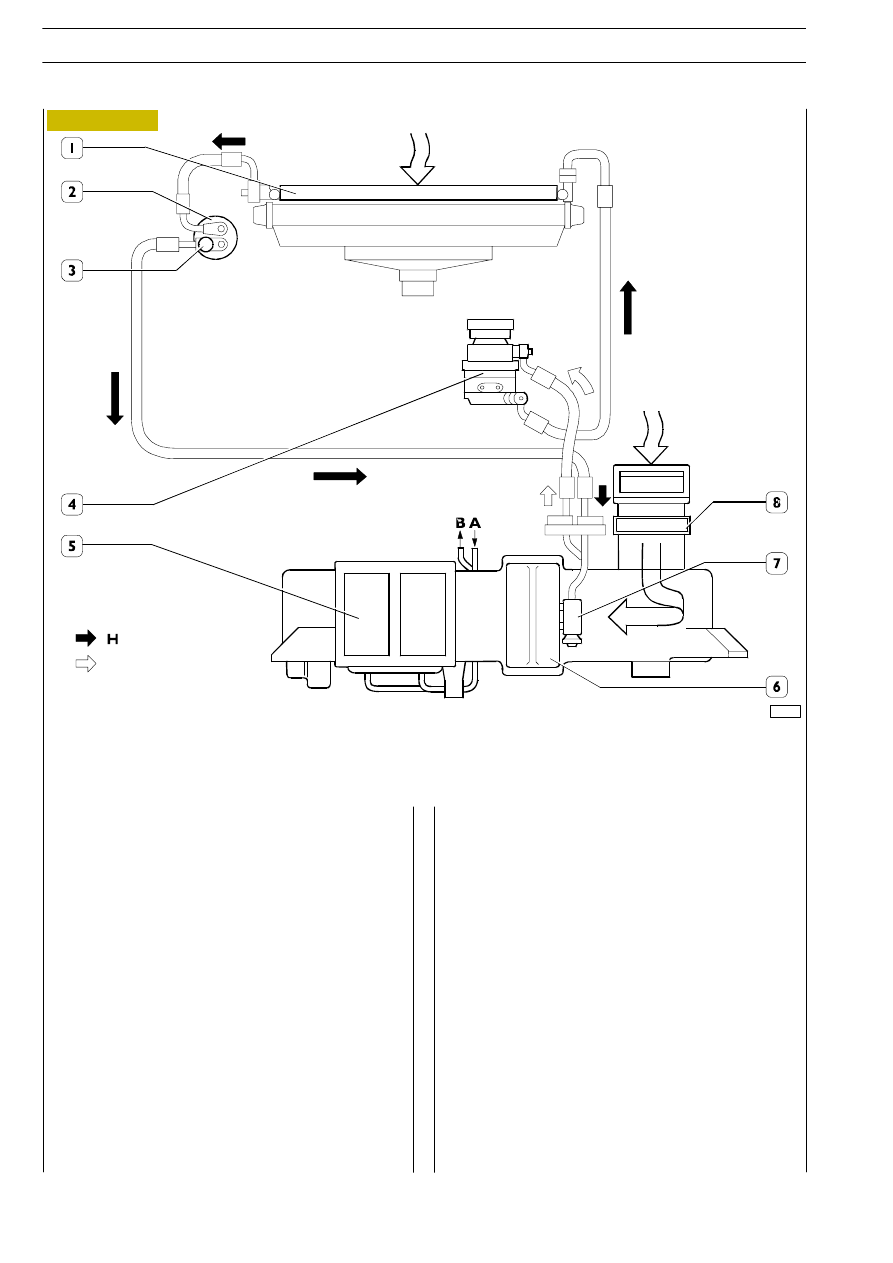Iveco Daily. Manual - part 341

A. Refrigerant liquid inlet - B. Refrigerant liquid outlet - H. High-pressure circuit - L. Low-pressure circuit.
1. Condenser - 2. Three-level pressure switch - 3. Drier filter - 4. Compressors - 5. Heater/fan unit - 6. Evaporator -
7. Expansion valve - 8. Pollen filter.
AIR-CONDITIONING AND HEATING
Description
This is accomplished by integrating an air-conditioning and a
heating system.
This integration makes it possible to change the temperature
and humidity in the cab.
Air-conditioning
Air-conditioning is accomplished by taking advantage of the
high capacity of some gases to lower temperature
considerably in their phase of expansion, thereby making it
possible to absorb heat from the cab.
This condition is obtained by two different levels of pressure
(high, when the refrigerant fluid is in its liquid state, and low,
when the fluid is in its gaseous state) that are established and
maintained during operation of the system.
52279
Figure 2
Heating
Heating is accomplished by a radiator, in the heater unit, in
which the engine coolant circulates.
Special doors allow air to pass through the radiator only
when the heating function is activated.
The main components of the air-conditioning and heating
system comprise:
- compressor (4);
- condenser (1);
- drier filter (2);
- three-level pressure switch (3);
- expansion valve (7);
- evaporator (6);
- heater/fan unit (5);
- pollen filter (8).
L
6
CAB AIR-CONDITIONING
D
AILY
AIR-CONDITIONING SYSTEM MAIN COMPONENTS AND FUNCTIONAL DIAGRAM